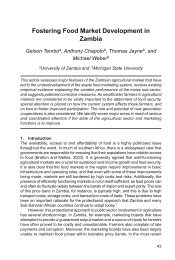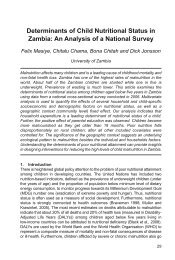Introduction to Basic Legal Citation - access-to-law home
Introduction to Basic Legal Citation - access-to-law home
Introduction to Basic Legal Citation - access-to-law home
You also want an ePaper? Increase the reach of your titles
YUMPU automatically turns print PDFs into web optimized ePapers that Google loves.
PREFACE<br />
Contents | Index<br />
This electronic publication was conceived in the summer of 1992. A small band of Cornell<br />
Law students, charged with identifying subjects on which computer-based materials would be<br />
particularly helpful, placed citation at the <strong>to</strong>p of the list. With their assistance I prepared the<br />
first edition of <strong>Introduction</strong> <strong>to</strong> <strong>Basic</strong> <strong>Legal</strong> <strong>Citation</strong>. It was released on diskette that fall, one<br />
of the first hypertext publications of Cornell's <strong>Legal</strong> Information Institute (LII). Later<br />
reconfigured for the Web, where it still resides at: http://www.<strong>law</strong>.cornell.edu/citation/, the<br />
work has been updated regularly in the years since. Like that online version on which it is<br />
based, this e-book was most recently revised in the fall of 2012 <strong>to</strong> take account of changes in<br />
the citation rules of a small number of U.S. jurisdictions and the format of currency<br />
information furnished for statutes by LexisNexis and West<strong>law</strong>. As was true of the editions<br />
released in 2011 and 2010 it is indexed <strong>to</strong> the fourth edition of the ALWD <strong>Citation</strong> Manual<br />
and the nineteenth edition of The Bluebook.<br />
A Few Tips on Using <strong>Introduction</strong> <strong>to</strong> <strong>Basic</strong> <strong>Legal</strong> <strong>Citation</strong><br />
This is not a comprehensive citation reference work. Its limited aim is <strong>to</strong> serve as a tu<strong>to</strong>rial on<br />
how <strong>to</strong> cite the most widely referenced types of U.S. legal material, taking account of local<br />
norms and the changes in citation practice forced by the shift from print <strong>to</strong> electronic sources.<br />
It begins with an introduc<strong>to</strong>ry unit. That is followed immediately by one on "how <strong>to</strong> cite" the<br />
categories of authority that comprise a majority of the citations in briefs and legal<br />
memoranda. Using the full table of contents one can proceed through this material in<br />
sequence. The third unit, organized around illustrative examples, is intended <strong>to</strong> be used either<br />
for review and reinforcement of the prior "how <strong>to</strong>" sections or as an alternative approach <strong>to</strong><br />
them. One can start with it since the illustrative examples for each document type are linked<br />
back <strong>to</strong> the relevant "how <strong>to</strong>" principles.<br />
The sections on abbreviations and omissions, on typeface (italics and underlining), and on<br />
how citations fit in<strong>to</strong> the larger project of legal writing that follow all support the preceding<br />
units. They are <strong>access</strong>ible independently and also, where appriopriate, via links from the<br />
earlier sections. Finally, there are a series of cross reference tables tying this introduction <strong>to</strong><br />
the two major legal citation reference works and <strong>to</strong> state-specific citation rules and practices.<br />
The work is also designed <strong>to</strong> be used by those confronting a specific citation issue. For such<br />
purposes the table of contents provides one path <strong>to</strong> the relevant material. Another, <strong>to</strong> which<br />
the bar at the <strong>to</strong>p of each major section provides ready <strong>access</strong>, is a <strong>to</strong>pical index. This index is<br />
alphabetically arrayed and more detailed than the table of contents. Finally, the search<br />
function in your e-book reader software should allow an even narrower inquiry, such as one<br />
seeking the abbreviation for a specific word (e.g., institute) or illustrative citations for a<br />
particular state, Ohio, say.<br />
If the device on which you are reading this e-book allows it, the pdf format will enable you <strong>to</strong><br />
print or <strong>to</strong> copy and paste portions, large or small, in<strong>to</strong> other documents. However, since the<br />
v




